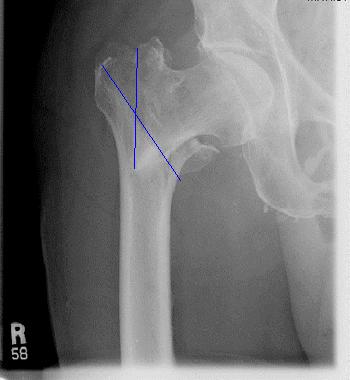Pelvis/Hip Case 6 History/Physical Exam
Intertrochanteric Fracture
History and Physical Exam

Nearly all intertrochanteric fractures are the result of a fall, although occasionally related to an automobile accident. The mechanism is usually direct axial loading of the femur with a rotational component or direct force over the greater trochanter.
Signs and symptoms include swelling, ecchymosis, and pain, particularly with any movement or weight bearing. The leg is shortened and externally rotated. Most commonly, both internal and external rotators remain attached to the proximal fragment, leaving the psoas muscle unopposed and producing a more marked rotation than that seen in a femoral neck fracture (up to 90 degrees).